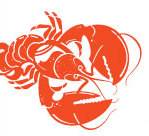Crayfish: A tasty invader that is destroying ecosystems in China
Updated: 2015-07-24 08:11
By Sun Jiahui(China Daily Europe)
|
|||||||||||
 |
|
Crayfish are sold at a food stall. [Photo by Jing Wei/Asianewsphoto] |
With summer here, freshwater crayfish - known in Chinese as xiaolongxia, or little lobsters - will be scuttling their way to tables nationwide.
The culinary popularity of crayfish, cooked with heavy seasoning and enjoyed with beer on a hot summer evening, swept the Chinese mainland in the late 1990s, and today it continues to be known for its pleasant taste, availability and lobster-like appearance.
Disturbingly, however, the shellfish is more than just a delicacy: It is an invasive and destructive species.
When the phrase "invasive species" started to make its way into newspapers, the Chinese people began to figure out that the crayfish is a pest that needs to be dealt with (or at least eaten with a vengeance). Unfortunately, at this time, rumors started to swirl about this strange creature to scare consumers away: Some claimed it was actually a type of worm, while others said it only lived in dirty water and fed on garbage.
The prize for most outlandish theory goes to those who claimed that the crayfish was a conspiracy - a genetically modified species left by the Japanese army who used them as a weapon to dispose of dead bodies (despite the discovery of the DNA double helix coming far too late for that, in 1953).
These groundless rumors garnered national attention, but the real harm these creatures cause is still lost on many people.
Crayfish, or more specifically the species known as Procambarus clarkii, are native to the southeastern United States, most commonly found in warm freshwater areas, such as slow-flowing rivers, marshes, reservoirs and irrigation systems. In 1927, crayfish made their way from Hawaii to Japan as food for bullfrogs, eventually making their way to China and landing in Nanjing in 1929. It wasn't until the 1960s that the crayfish became known as a source of food.
As with many invasive species, it was promoted as an economically valuable food with little or no regard for the environmental consequences. This small, seemingly insignificant creature has been wreaking havoc on farms and ecosystems around China ever since.
A hardy species, the crayfish grows and breeds quickly, even in seasonal waters, capable of surviving dry spells, saltwater, and low oxygen content in water. As it does so, it feeds on a wide range of aquatic plants and fish.
Not only does it throw aquatic ecosystems into disarray, but it also plays a destructive role with its burrowing. It damages water tables and decreases the stability of small dams. For rice farmers, the crayfish seems to be an almost insurmountable foe.
With a history of more than 1,300 years, the rice terraces of Yuanyang county in Yunnan province, a World Cultural Heritage site, are now under threat from this tiny, edible freshwater crustacean. The crayfish there can be found up to 1 meter under the soil, causing the terraced fields to leak water and making the growing of crops nearly impossible.
According to Hangzhou Daily, crayfish in Yunnan have destroyed about 2,000 hectares of rice fields, which are now entirely full of crayfish holes and are useless for growing rice. The local government has allocated 1.1 million yuan ($176,880; 163,600 euros) a year since 2012 to exterminate 3.7 million crayfish annually. The authorities have also issued rules stating that crayfish farming is not allowed in terraced fields, and that no crayfish should be sold.
Today's Top News
Debris found off Africa linked with Flight MH370
Presidents vow to fight terrorism
China's youth: rebellious, or misunderstood?
Somalia offers apology, seeks China's help
Myanmar grants amnesty to 155 Chinese loggers
Bid blocked at UN to send Malaysian Airlines jet downing to int'l tribunal
Afghanistan says Taliban leader is dead
Chinese premier meets Turkish president
Hot Topics
Lunar probe , China growth forecasts, Emission rules get tougher, China seen through 'colored lens', International board,
Editor's Picks

|

|

|

|

|

|







